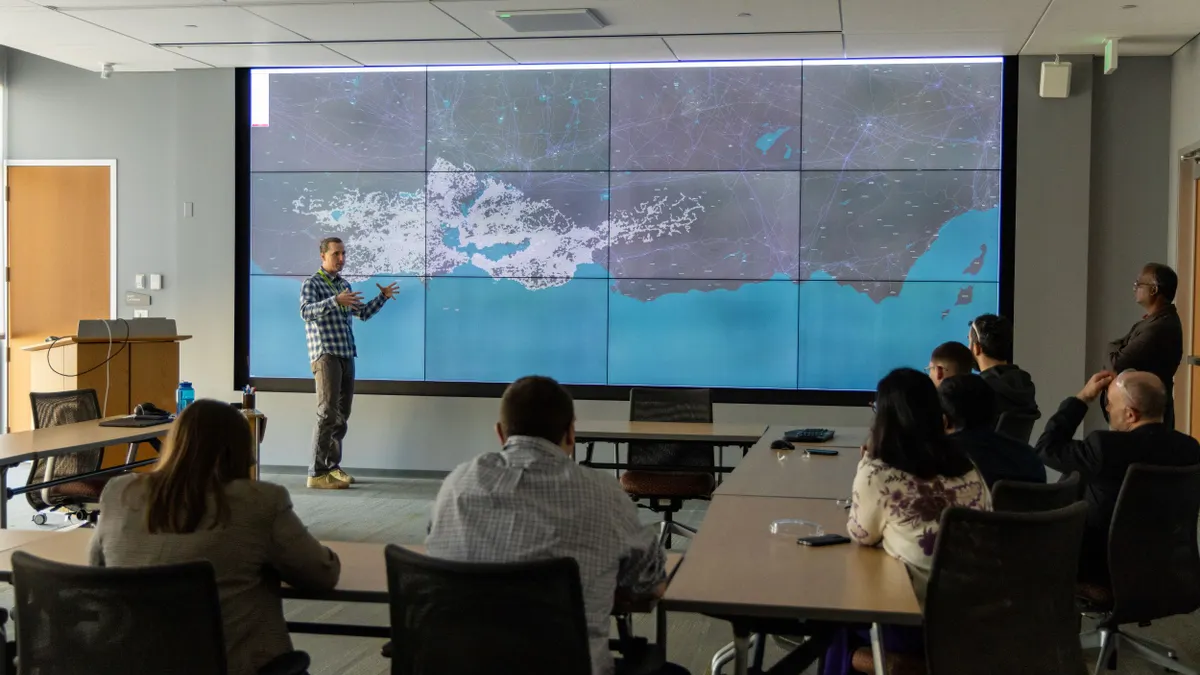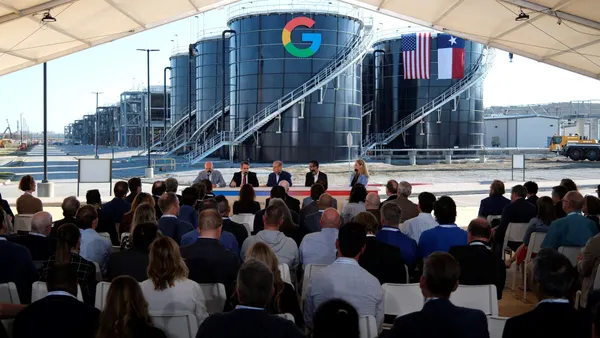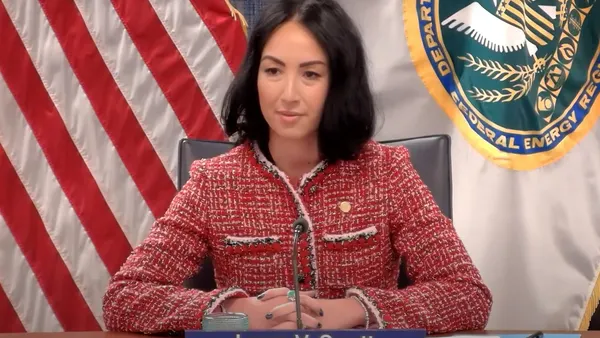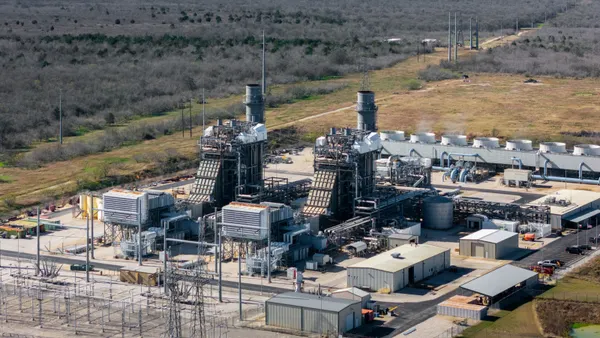Dive Brief:
- Utah-based EnergySolutions intends to apply for an early site permit from federal regulators to install new nuclear generation at the retired Kewaunee Power Station in Kewaunee County, Wisconsin, the company said in a statement last week.
- The nuclear services company is partnering on the project with WEC Energy Group, which owns the electric and gas utilities We Energies and Wisconsin Public Service.
- The early site review could take about two years, followed by a “rigorous permitting process by the Nuclear Regulatory Commission,” WEC spokesperson Brendan Conway said in an email. If the project moves forward, construction could begin in the early 2030s and the new plant could come online in 2038 or 2039, he said.
Dive Insight:
The announcement comes amid renewed interest in nuclear to provide low-carbon energy as electricity demand rises. Some of that interest has centered on restarting decommissioned reactors, but much of it is focused on small modular reactors that experts say can be deployed more quickly and less expensively than traditional reactors.
Only a few working small modular reactors exist in China and Russia, but North American companies are racing to design and bring one online.
Conway said there’s no consideration of restarting the old reactor on the site.
“Decommissioning work at the plant has been going on for years,” he said. “It would not be practical to try to restart it.”
Conway emphasized that the companies are “still in the very early stages of this process” and have not made any decisions about which new reactor technologies they might deploy at Kewaunee. Small modular reactors are under consideration, he added.
The amount of new generation EnergySolutions and WEC could bring online and the site’s total hosting capacity is unclear. EnergySolutions CEO Ken Robuck told Wisconsin Public Radio last week that his company was considering expanding the site’s boundary to accommodate “a larger energy center” and had offered to purchase some adjacent properties.
The Kewaunee power plant began operations in 1974 and ran until 2013, when then-owner Dominion Energy Resources shut it down for economic reasons. EnergySolutions acquired the site in 2022 and began decommissioning and dismantlement operations that are expected to last until 2055.
Robuck cited “rising energy demand driven by data centers, artificial intelligence and industrial growth” as motive for deploying new nuclear at Kewaunee.
Rising power demand is behind recent decisions by the owners of three other idled U.S. nuclear power plants to try to restart operations later this decade.
The highest-profile reactor restart project involves the undamaged 835-MW reactor at Constellation Energy’s Three Mile Island power plant, now called the Crane Clean Energy Center. Microsoft has agreed to purchase all of the power produced at the southern Pennsylvania site for 20 years.
Constellation has said it aims to resume operations at Crane by 2028.
In Michigan, Holtec International could restart the idled reactor at its 800-MW Palisades nuclear plant as soon as this year, despite recent pushback from local residents. Holtec and two electric cooperatives were awarded nearly $3 billion in loan guarantees and grants last year from the U.S. Department of Energy and the U.S. Department of Agriculture.
Holtec also plans to deploy two of its own 300-MW SMRs at Palisades in the early 2030s.
Meanwhile, NextEra Energy is exploring a potential restart of the 600-MW reactor at its Duane Arnold power station in Iowa. That plant shut down in 2020 after sustaining exterior damage in a windstorm.
All three plant owners have engaged with the NRC on the proposed restarts. The NRC says it expects to issue its final licensing decision for Holtec’s Palisades project by the end of July.
Crane, Palisades and Duane Arnold are among the most feasible retired U.S. reactors to restart, nuclear experts say. Most other retired reactors are too far into the decommissioning process to restart cost-effectively, even in a world of brisk load growth and higher electricity prices, they say.
That means hundreds of gigawatts of newly built reactors will be needed to triple U.S. nuclear capacity by 2050, a goal set by the Biden administration last year. The Department of Energy said in September that existing nuclear power plant sites could support up to 95 GW of new reactor capacity, while retired coal-fired power plant sites could accommodate up to 174 GW of new nuclear.













